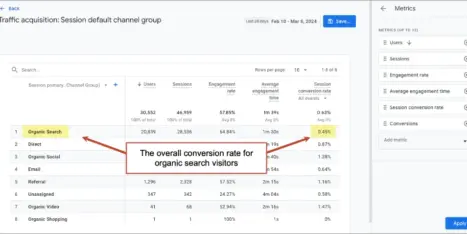If you haven’t already, you should read Andy Crestodina’s stellar piece about how social media helps SEO. You’ve maybe also noticed that keyword research helps your social posts gain more targeted reach, gleefully told your client that content marketing and SEO are best buddies forever or tweeted the social vs SEO smackdown infographic.
Now, what if you could step it up and apply the same principles to hack the growth of both your social media and search presence?
The sweet truth is, you can. All you need to do to maximize your time and knowledge is to look at the bigger picture first.
SEO and social media are much like skis and snowboards – one has been around for longer than the other, but they borrow each other’s technology and develop together. Let’s dive in.
1. The Snowball Effect
Posting schedule with high frequency is effective in both social media marketing and SEO.
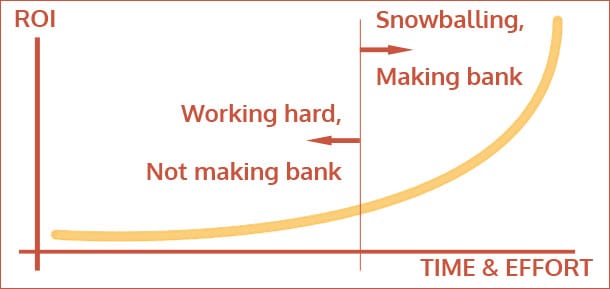
The Snowball effect is a process that starts from an initial small state and builds upon itself, becoming larger and larger, until it gains momentum and starts growing at an exponential rate. It’s common in many aspects of society, represented in Tipping Point by Malcolm Gladwell, and particularly useful as the mindset to have in marketing.
When your campaigns start growing exponentially, you typically also pass your tipping point. You were not making bank for a while, and now you are.
In both social media and SEO, you need to plan for that initial stage, make your client’s expectations clear and pay attention to early signs of gaining momentum. Use data and reward the most engaged audience members to grow the snowball faster and hit the tipping point earlier.
To achieve the snowball effect, you need to maintain a posting routine with high frequency. Post to Instagram daily to experience an accelerated follower growth, or make search engines favor you by creating fresh content regularly. If your hits die off, you’re starting over. If you post again while you’re still getting hits, you’re adding fuel to the warm and cozy bonfire.
2. Long Tail
Hashtags are like keywords. Long tail targeting works great for both.
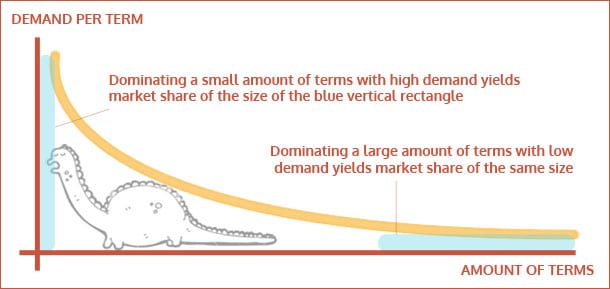
The concept of long-tail states that working on winning market share in many small segments can be a better growth strategy than trying to win market share in a few large segments. This is aptly applied by SEO’s who know they shouldn’t use a bike if they want to win a car race (scroll to #6).
For the sake of content discoverability, keywords are very much like hashtags. They both work like radio frequencies – as soon as you know where to tune in, you find your favorite content. With one beautiful difference in favor of us, online marketers – with hashtags and keywords, you too can broadcast.
Dig deeper into Instagram, Twitter or LinkedIn and you’ll fall in love with hashtags that have lower reach but higher engagement rates. Such tags should be in everyone’s social media guidelines.
I’ve best experienced this when building Instafame for my pooch. #Dog was big and relevant, but noisy. #Englishsetter was used and searched far less, but the rate of people turning into followers was amazing, and comments kept coming for days.
3. Social Proof
Gain both social shares and backlinks by building relationships with the right people.
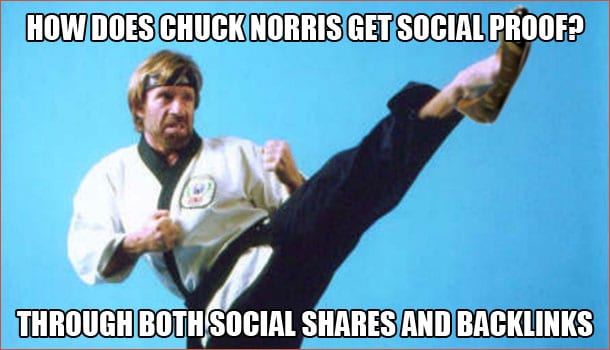
Credibility today is scaled in a way that has no precedent in history. People share articles without reading them and content with high share counts always looks like it’s safe to be shared more. With SEO, the effect of social proof can be even stronger – we take search results for the best answers to the questions we type in and happily neglect that useful and informative articles don’t always rank high on Google.
These are examples of simplification that the brain naturally applies to look for clues that make the world easier to understand. Use it to your advantage by building relationships with the people that will help you gain social shares as well as backlinks. Link building is, after all, more and more about relationship building.
4. Crowdsourcing Your Marketing
Crowdsource your marketing by providing value to those who have large and relevant audiences.
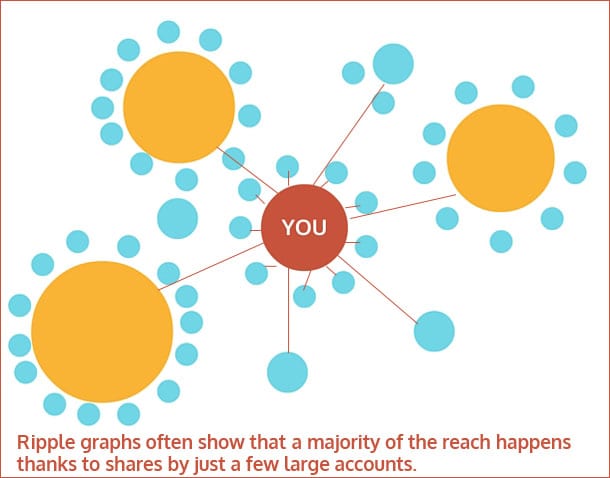
This is my favorite. Because you can always have more people talking about how great you are. A substantial difference between marketing today and yesterday is that you can use the crowd much easier.
Think of the dark time when billboards were cool and the spray-and-pray approach was as good as it got. That time is the reason so many people still think you lie for a living when you tell them you’re a marketer.
Today’s marketing based on transparency is so, so much better for all parties involved. Be a great brand that provides value people want to talk about and you’ll get mentions on a consistent basis. Ideally, provide value to those who have large and relevant audiences. Also, give up some control over what exactly people say about you, and reward those who stir up conversations for you.
Facebook is a good example. They get free exposure for their logos not just during the Super Bowl, but also across large non-Facebook social timelines and footers of all high traffic sites. Similarly, Link Explorer by Moz and page speed tests by services such as Pingdom are so handy that large amounts of people give them mentions on both social media and websites every single day.
If you’re smaller, create something timely and valuable to your niche. It could be a library of best practices relevant to the industry you monetize, the way Yoast does it with their SEO blog. It could be a tool that streamlines the process for your client base, the way Effin Amazing does it with their Segment CSV importer. Or it could be anything else you think of that makes the people mentioning you look resourceful.
Alternatively, just be a moderator, and make sure your niche finds value in the arena you build. Venue owners, mastermind group admins, and event planners all tend to have large clout. Why not become one, or help a group that’s already established?
5. Data Driven Decisions
Using SEO and social media analytics together improves your data-driven marketing.
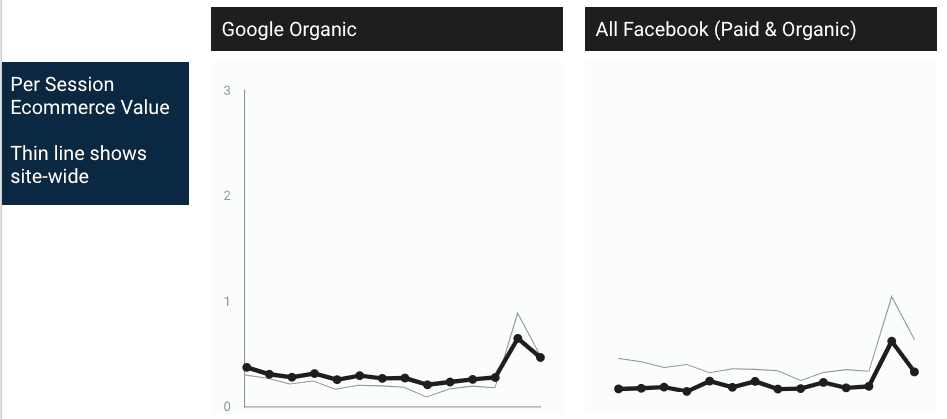
No, wait, this one is my favorite. Remember that time you told a client or a coworker about an actionable piece of information you dug out in Facebook’s Audience Insights or Google Search Console? Most likely, the feedback was either in the form of sincere praise or in the form of complete silence because the person was so consumed by plotting how they were going to use your information.
The beauty of online marketing analytics is that it brings value to the entire organization, not just the online marketing team. So you’re off to a great start, and combining data from SEO and social media will make your impact bigger. I asked for Search Console access to our clients’ sites even back when we had some that we did social media marketing for. It helped us in two ways:
- Tracking is never perfect. If I can juxtapose social and SEO, I know how reliable my data is.
- Turning a data puke into an analysis requires subjective interpretation. That is much easier when you have two different points of view about the same piece of content. It is like studying for a certificate from two similar books. You understand more, you remember it better and you are able to apply it better.
6. Topical Relevance
It is effective to focus on a carefully selected area of expertise.
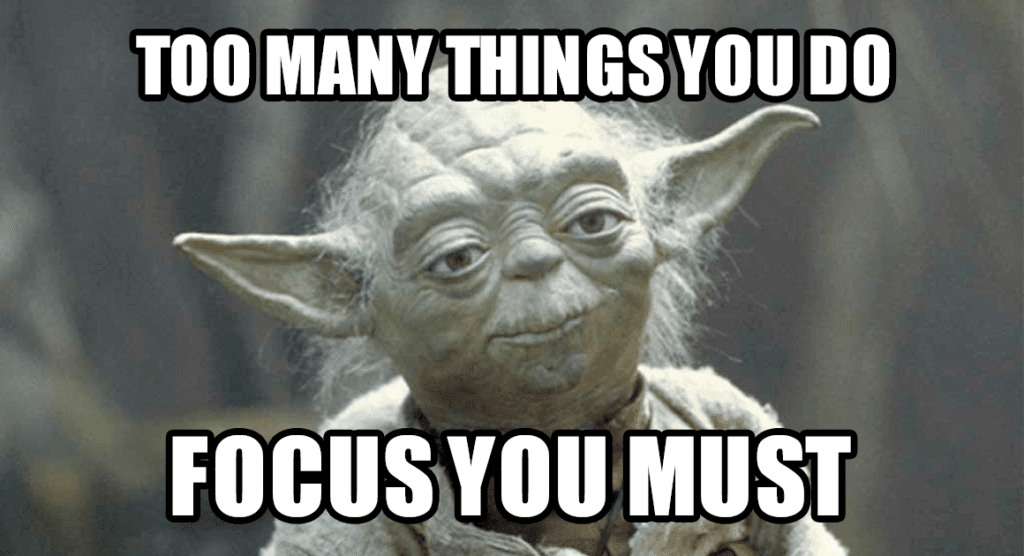
Being famous or influential today is a much better deal than what it used to be. Back just a few decades ago, individuals known by thousands or millions of others would have to be in a limited number of professions with public attention – such as a politician, TV anchor, journalist of a mainstream newspaper, a competitive athlete, or an author of printed publications. Gaining influence through all of the above takes time, as well as it leads to reaching audiences who often only care about you a little.
Today, you can build up clout much faster by focusing on a niche and getting online. Whether you focus on how-to blogging for SEO, or opinionated artistic expression for social media, focusing on a narrow audience will get you farther, faster. On the internet, it is effective to become relevant within a carefully selected area of expertise, a specific topic.
The expression of this principle will differ. In social, topical relevance will help you get shares from a core audience right when you post something new and give your post that critical boost early on. In SEO, backlinks from topically relevant sites will serve as strong signals to search engines even when the linking sites are somewhat small.
7. Brand Power
Brand power is hard to measure, easy to feel.

On both social media and search engines, content by notorious authors often outperforms content by smaller names. This is valid in all consumption in general. If you go to the store and you find two similar items, you’re likely to pick up the one with a brand label you’ve seen before. In my point of view, the biggest value of branding is that it makes it easier for the buyer to make decisions.
Social networks, as well as search engines, cater to this phenomenon. Social media algorithms favor showing you content from accounts that your friends are fans of. Search engine algorithms consider several brand signals.
But even if the brand was not a part of the algorithms, it is safe to state that we are more likely to click on content by an author we’re familiar with (just like when we pick a familiar brand at the store). In turn, click-through rates are strong distribution factors on both social and SEO.
Brand power is likely something we’d expect to factor in on social media. But it is not always an expected factor on search engines, as we turn to them with the expectation of objective ranking of information. Yet, the brand is super strong there, too. You see it when WebMD or Healthline outrank a clinic even when the clinic’s page is more hands-on and has a cleaner design.
I recently saw it when doing content research for an extensive SEO testing guide we wrote. The top result was by Neil Patel even though I didn’t find it to be actionable. It didn’t have a tool walk-through, a useful case study or a hands-on list of testing ideas – contrary to the articles ranked right below it. Now, I do still think that with our thorough application of the skyscraper technique, we can outrank Patel’s piece. But if we had his brand power, it would be doable in weeks instead of months.
8. Testing
A test-driven approach minimizes unpleasant surprises, helps you scale faster, facilitates the approval process, and refines your strategy.

The image above shows the development of an SEO test we conducted with seotesting.com. It was for a large monetizing blog, and the test was about rewriting meta titles and descriptions for higher organic click-through rates.
I find the chart particularly useful for demonstrating the importance of proper testing. It shows that if we only paid attention for the first week, we would be likely to conclude that the control set and the test set were even. The chart also shows that the resulting difference after two weeks is fairly small but noticeable and consistent. If we only looked at Google Analytics or Search Console data, instead of comparing the control set to the test set in a proper testing tool, we would probably misunderstand the quality of improvement.
Testing is just as important in social media marketing. In paid social, it is best practice to test a handful of creatives and copy versions before launching the ad campaign to the whole target market.
A test-driven approach pays off both on search engines and social media. It eliminates unpleasant surprises, helps you scale faster, facilitates the approval process, and refines your strategy.
Chime In, Take Action
Comparison is a very effective learning method, as well as a fundamental research method. Learning the common growth principles of social media and SEO will help you learn faster, and applying them will help you get ahead. Therefore, go do just that – go apply the ideas, take action and grow.
Talk to your SEO and social media people at the same time, not in separate meetings. If they’re both good at what they do, they’ll fall in love at first sight. Go back to your high-converting blog post and think of tweaks that will get it more social shares as well as links. Analyze the infographic that’s already snowballing on social, and reactivate your distribution effort to make it do the same on Google.
Social and SEO develop rapidly, so this list could never be exhaustive. If you have a tactic to add or share your take on, we’d love to hear about it in the comments below.


